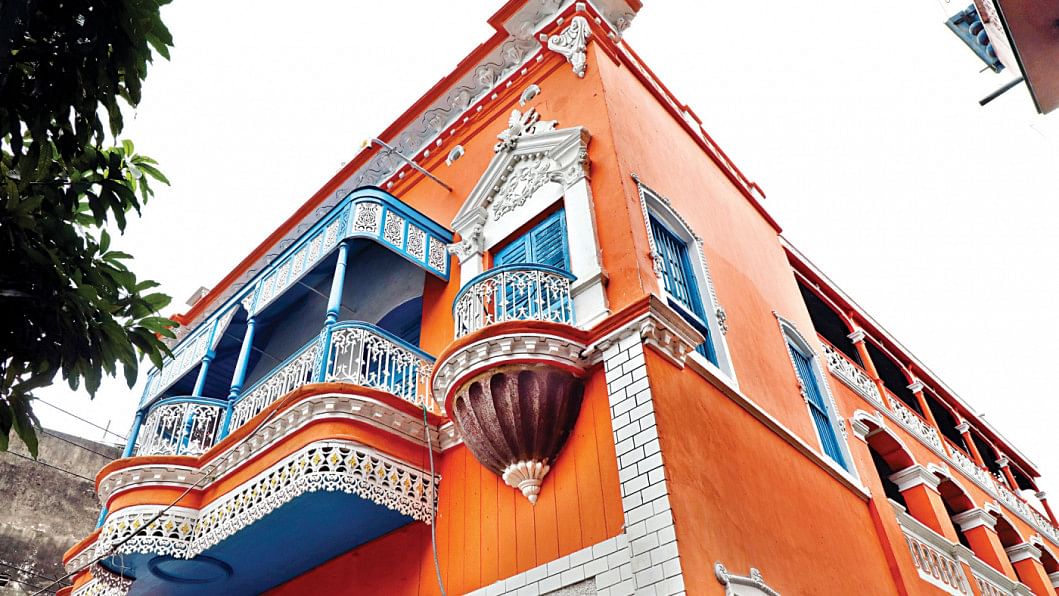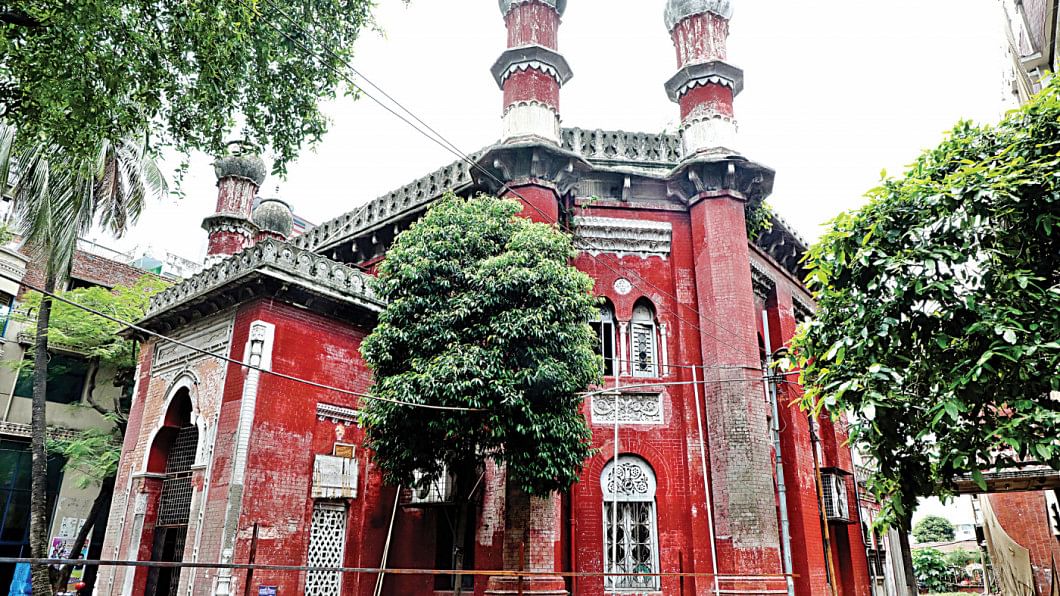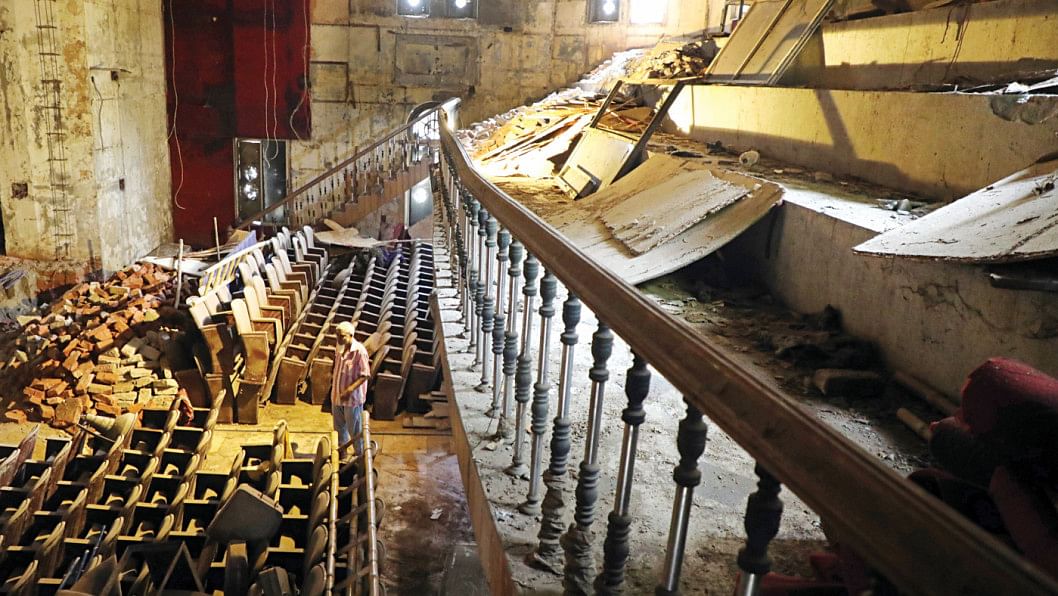Farashganj: The French connection
In the heart of Old Dhaka, there lies a neighbourhood with a captivating history, centuries-old buildings and a thriving spice market. Farashganj is located on the northern bank of the Buriganga river. Established in 1780, its principal thoroughfares are BK Das Road and Ahsanullah Road. In today's issue of the Weekend Read, we will explore the history, mystery, and spice of Farashganj.
FROM FRENCH-GANJ TO FARASHGANJ
The place was originally named French-ganj, as it was home to a large French community in the late 18th century. The French settlement in Farashganj was primarily focused on the wholesale trading of spices, and the area quickly became a major centre for trade and commerce.
The French presence in Farashganj came to an end in the early 19th century, when the British East India Company took over the area.
However, the name lived stating the early French connection of Dhaka.
Today, Farashganj is still a major centre for the spice trade, and it is also home to a number of historic buildings, including the Ruplal House, Northbrook Hall, Laxmi Villa, Bihari Lal Jeo Mandir, Bibi ka Raoza, Shiv Mandir and Gokul Roy's Samadhi.
The balconies are readily brought into an onlooker's attention by their French windows, pediments, motifs and ornate Corinthian columns. The sheer symmetry of these elements, and the layout of the three balconies together, make the residence remarkably beautiful.

BK DAS AND HIS LAXMI VILLA
As one steps onto BK Das Road of Farashganj, the sheer magnificence of Laxmi Villa will capture their attention. This architectural gem bears witness to the passage of years and the evolving landscapes of the city.
The sturdy gate, which had been locked for years, guards the building with an air of secrecy. The year 1911, carved into the exterior, adds to the intrigue, reminding of its century-old presence in the city.
The facade's neatly decorated pair of balconies on two sides, with an elongated one in the middle, makes a good first impression.
The balconies are readily brought into an onlooker's attention by their French windows, pediments, motifs and ornate Corinthian columns. The sheer symmetry of these elements, and the layout of the three balconies together, make the residence remarkably beautiful.
This stunning structure from the early 1900s belonged to Basanta Kumar Das, a local landowner and businessman of his time.
Mostaque Hossain Monju, manager of Lakshmi Villa, said Basanta, originally from Barishal, arrived in Dhaka as a young individual and found his home in Farashganj. Through his entrepreneurial spirit and hard work, he thrived and gained respect from his peers and the community.
Although information on his life is limited, ongoing efforts to uncover more details from local sources and historical archives are shedding light on his remarkable journey. From available records, it is evident that he played a crucial role in Dhaka's business landscape during the 19th century.
Suffice to say, the road is named after him.
Sadly, the passage of time and neglect took a toll on Laxmi Villa, gradually diminishing its former grandeur. However, the current owners recognised its historical significance and renovated the building. While the renovations have revitalised the structure, some modifications have been made to its original design.
MANGALAYA
Mangalaya was constructed in 1915 by Ashutosh Das, a local landlord known for his involvement in various businesses such as construction, brick manufacturing, and imports.
Mangalaya is currently facing the imminent threat of demolition. The new owner started the destruction of a significant portion of the building, including its unique ornaments and features last month.
Due to intervention of conservation organisation Urban Study Group, the demolition work has been suspended.
Mangalaya boasts a two-story traditional design that features an enchanting open courtyard adorned with intricate ornaments -- a hallmark of heritage structures in Old Dhaka.
The rear of the building encompasses another open courtyard and a shorter block that extends towards the back boundary. However, it is the building's street-side appearance that captivates onlookers.
The structure exhibits two semi-octagonal blocks on either side, with a swing-porch nestled between them -- a characteristic influenced by French architecture, prevalent in the Farashganj-Sutrapur area.
Of particular note is the second floor of the building, where three decorative pediments [triangular upper parts of a building] grace the roof in the elegant French Rococo style.
Taimur Islam, chief executive of the USG, said, "This building holds immense significance for all citizens passionate about preserving cultural heritage due to its aesthetic importance. The unique decorations and distinctive architectural elements make it unparalleled in Dhaka."
For about 150 years, Farashganj has served as the epicentre of wholesale trade for various agricultural products. This includes a wide range of spices like onions, garlic, ginger, turmeric and pepper. Today, the market boasts around 350-400 warehouses.

ALL THINGS SPICE
It's quite impossible to talk about Farashganj without mentioning the spices. From the days of being a French settlement to the present, one element of this area has remained constant -- spices.
Every morning, as the sun rises, the doors of Farashganj's spice warehouses open, signaling the start of a busy day. The streets of BK Das Road, North Brook Hall Road, and Buckland Dam areas come alive with a diverse array of people involved in the trade, such as importers, wholesalers, retailers, and transport workers.
From 6:30am until late at night, the Farshganj kitchen market, locally known as Shyambazar, is abuzz with buying and selling activities, reaching its peak from noon to 10:00pm.
For about 150 years, Farashganj has served as the epicentre of wholesale trade for various agricultural products. This includes a wide range of spices like onions, garlic, ginger, turmeric and pepper.
Today, the market boasts around 350-400 warehouses, said Md Saeed, president of Farashganj Agricultural Products Arhat Traders Association.
"While traders in Farashganj diligently search for supplies in the market, their share in the onion and garlic market has declined. Wholesale shops have emerged in various areas of Dhaka, and importers are no longer concentrated solely in Farashganj," he added.

THE BUILDING IN RED
Northbrook Hall, also known as Lalkuthi, situated in Farashganj's Wiseghat, on the bank of the Buriganga, is steeped in history.
The hall was inaugurated on May 24, 1880, marking the birth anniversary of Queen Victoria by the commissioner of Dhaka. It was named after Lord Northbrook, viceroy of India.
On February 8, 1882, a public library was added on the southeast side of the Hall, which opened in 1887 with a collection of 1,000 books. Later, it was named the Johnson Hall and attained fame for its literary collection.
After almost 46 years, Rabindranath Tagore was given a grand reception on February 7, 1926, in the hall by Dhaka Municipality and People's Association.
Many books from the hall's enriched collection were ruined during the Liberation War in 1971.
Unfortunately, over time, the historic building lost its former glory and faded into a state of neglect. Currently overshadowed by the headquarters of the Farashganj Sporting Club and the local councillor's office, Lalkuthi's charm has waned.
However, with the renovation initiative undertaken by the DSCC under the Dhaka City Neighborhood Upgrading Project, efforts are being made to restore Lalkuthi.
Project Director Sirajul Islam said the World Bank is providing financial support for the restoration.
The initial phase of the renovation involves removing illegal structures surrounding Lalkuthi to create space for the restoration work. While it may not be possible to fully restore the building to its original form, the DSCC aims to bring back its historical essence, he said. "This project's deadline is June, 2024," he added.
Today, these edifices, built over a century ago, act as tangible markers of a fascinating chapter of Dhaka's heritage.

 For all latest news, follow The Daily Star's Google News channel.
For all latest news, follow The Daily Star's Google News channel. 



Comments